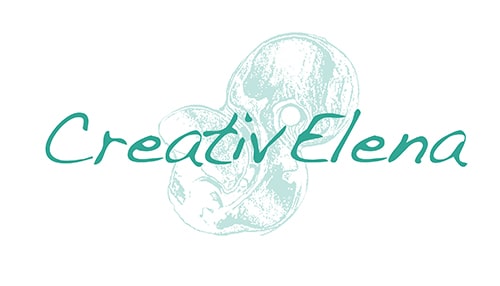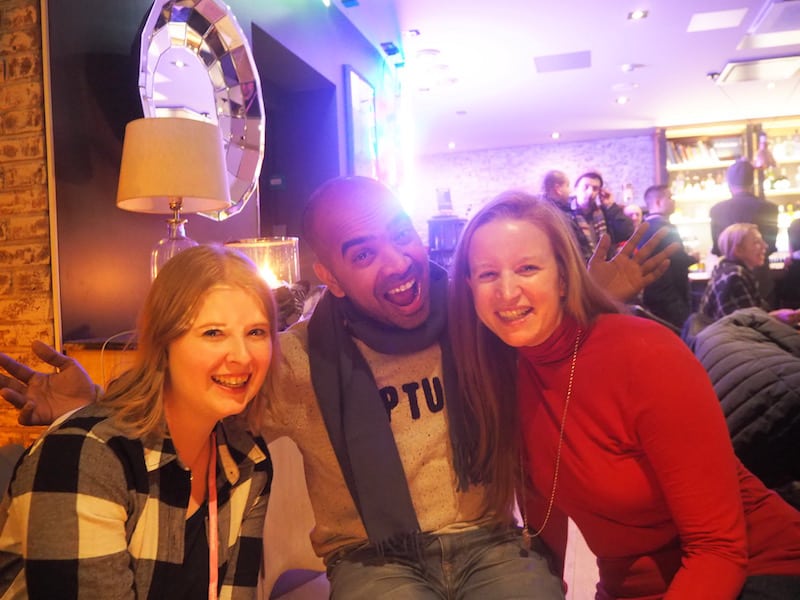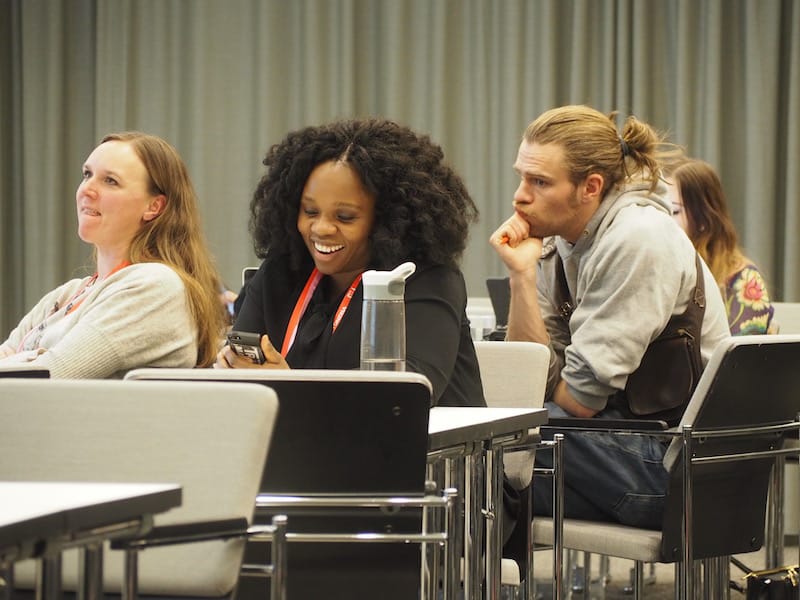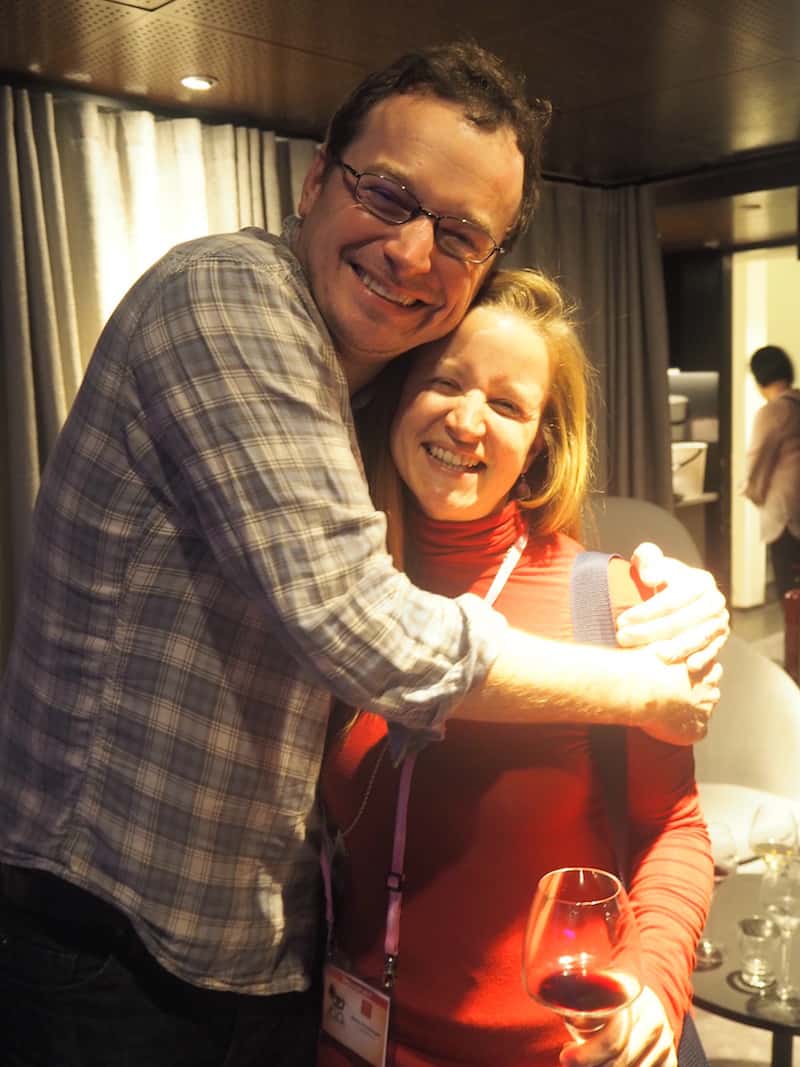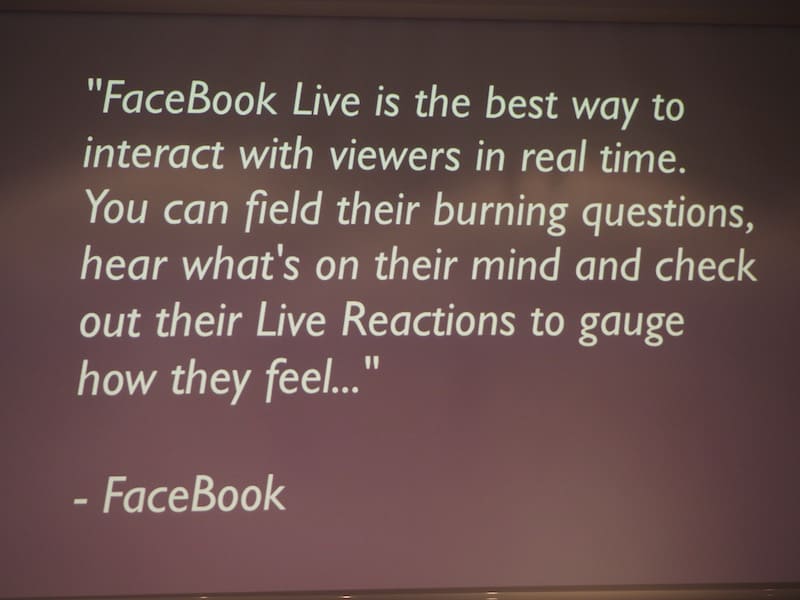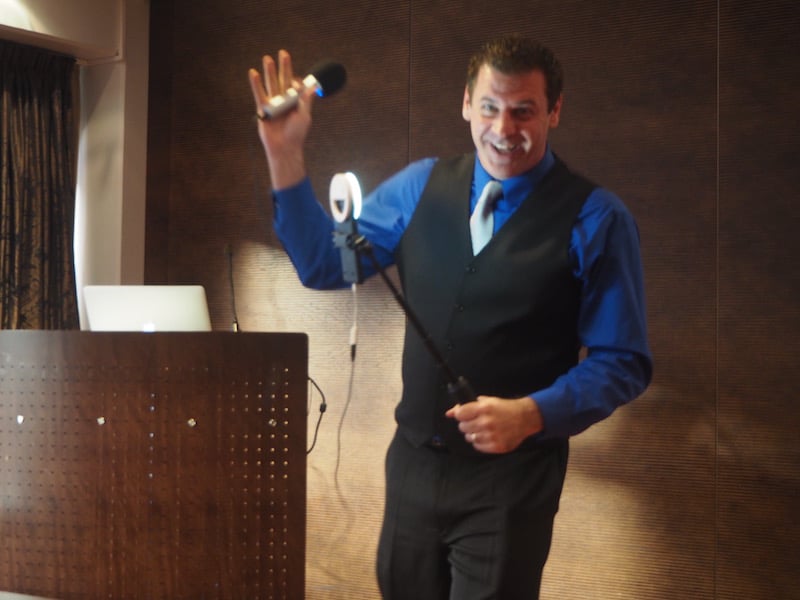“When was the last time you did something for the first time?”
A popular quote I always enjoy using in my presentations, the last time I did something for the first time was Wednesday, 18 January 2017. My first #NBEFinland conference, as well as my first-ever speech on how to move “from niche to business” in the digital influencer spheres of creative travel.
An honouring opportunity that’s for sure. But #NBEFinland is so much more. Grown out of Helsinki’s annual Travel Trade Show “Matkamessut”, it brings together some of the most renowned digital travel influencers of our time. A breeding ground for business, ideas and lots of fun moments alike.
Everybody attending #NBEFinland is hand-picked by a team of international travel experts with a long-standing track record in the digital influencer spheres. I remember the times when the wonderful Inna-Pirjetta Lahti, herself the mastermind & mother behind #NBEFinland, and I first spoke of creating a blog lab session called “From Niche to Business” during our past attendance of TBEX Travel Bloggers’ Exchange conference in Stockholm. Months later, I was to speak at her conference together with leading expert on Budget Travel, Kash Bhattacharya, as well as Milou van Roon, of Explorista.net for having created successful business models out of each one’s unique niches in the blogosphere. “You will do well, Elena”, both Terry & Sarah Lee said to me in encouragement, themselves some of my dearest friends & business partners in the entire “business of blogging”.
Check out the slides from our presentations during the Blog Lab “From Niche to Business” here:
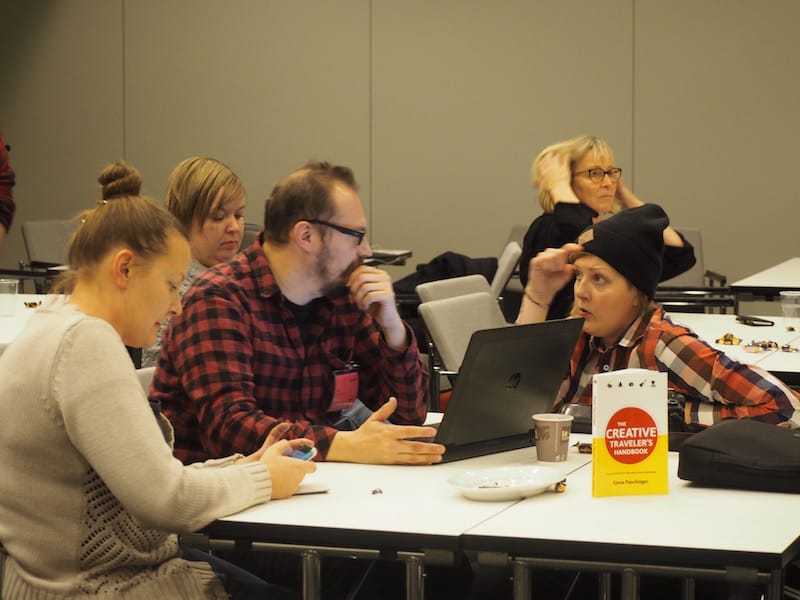
Thank you for your interest in my talk, and for spotting my book, the #CreativeTravelersHandbook there once more !
The first blog lab session during #NBEFinland’s Matkamessut saw Lola Akinmade-Akerstrom, Janicke Hansen & Erik van Erp talk about “unique content creation”. Content (and context!) are king!
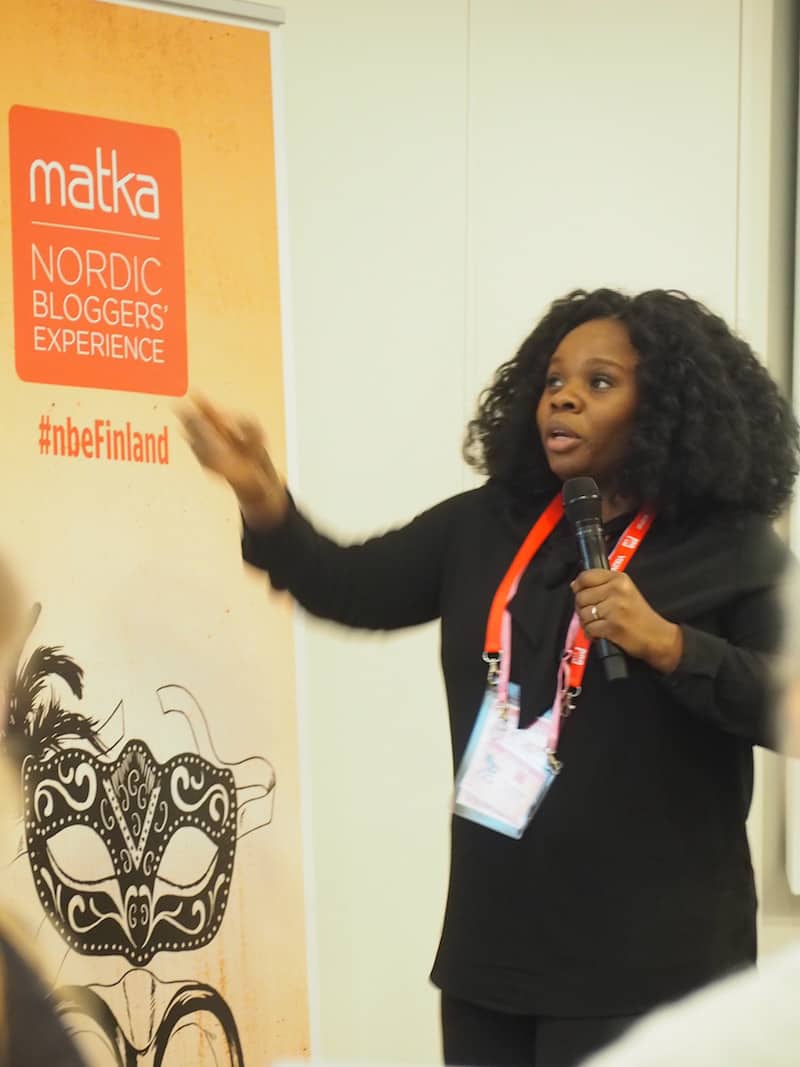
Lola Akinmade-Akerstrom, a National Geographic photographer and acclaimed writer / influencer, “debunks the myth” by saying that “80 to 90% of the most ‘successful’ blogs out there get their traffic from organic search. Don’t dilute your voice: Viral content can bring ‘wrong’, short-lived audiences. Social Media is ephemeral, but blogs have longer shelf lives. Branded, evergreen content is more effective than ads”, she adds.
Here is a five-point list I have created from summarising her talk that will help you address important points about the business of better content creation online:
- Know your USP: What is it that makes you special? What are your own, unique storytelling strengths? How do you differentiate your visuals from organised (group) trips?
- Know how to integrate your daily non-traveling life, your habits, your other skills, into the digital storytelling you create.
- Micro-focus on a very specific element from the experiences you gather.
- Position yourself as an expert: Build expertise in a region and / or subject matter.
- The more niched you are, the higher chances you have to rank.
Janicke Hansen then goes on to speak about content that makes money: “The combination of all your content is your brand. Your content is your asset, your product. Don’t harm it. Build it, add to it, feed it over time. This is your accumulated wealth that you can capitalise on in your negotiations with brands, DMO’s, etc.”
So how do we choose who to work with? Janicke reminds us to look for a “shared interest between your work and that of your partner, to work with DMOs that compliment, that actually pay into your brand. Read quality to learn how to write quality. Have a point! Speak to all senses. Do your homework. Double check the facts. Spellcheck names. Show diligence and care. Show professionalism. And remember to bring your readers along, always and in every stage of your unique content creation.”
Erik van Erp, finally, marries content creation with the importance of SEO:
“93% of all Internet activity begins through search, and how that works is changing. There is a major shift towards mobile. Remember: 73% of all statistics are made up. Don’t go (only) for the hard numbers”, he recalls.
So what is most important? “Great” content. Promotion. Site structure. Having a “SEO optimised” website. Search engines, Erik mentions, often “need a little help” navigating around your site, and “90% of bloggers are doing it wrong”. Here is what Erik van Erp strongly suggests we do:
- Don’t put your article in too many categories.
- Have content categories that are really distinct: Think inside the box this time!
- (Re)Organize your tags / categories periodically. Ask a friend (who’s never been to your website) to help you. If you do it yourself, you may be too focused.
- Have your key words at the top of your article, use it in the title tag, make use of H1, H2 headlines, remember picture descriptions, YOAST for Wordpress, etc.
- Become a topical expert, i.e. have a lot of articles within a certain topic. Think of how you can optimize your articles for SEO and write “topical” stories.
- Type in your brand name in Google and see what other suggestions come up in the search: Those suggestions are popular type-ins from users! For instance, if you type in “around the globe”, suggestions such as “forum Thailand sri lanka” etc. come up, indicating popular user searches for Erik’s own website in this case.
- Combine your bounce rate with the time spent on your site: Only the bounce rate alone will not tell the whole story about your website.
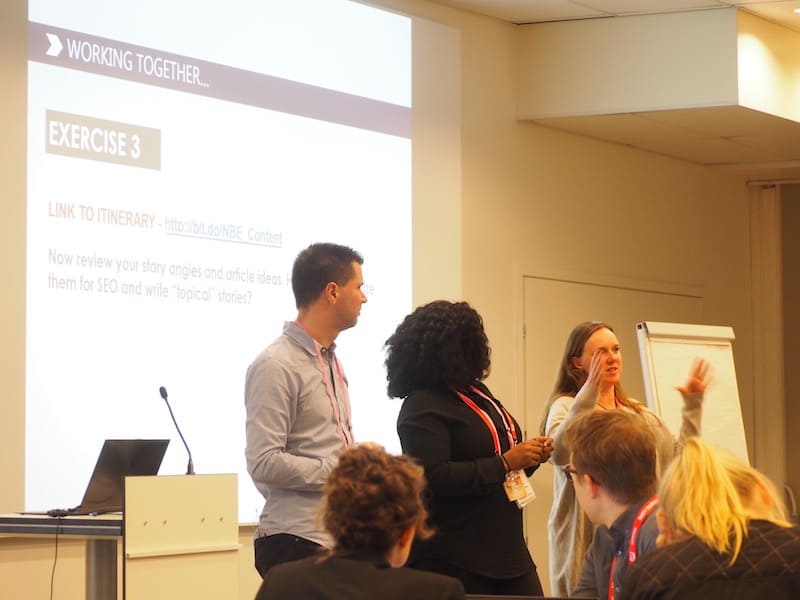
Thank you, dream team Erik, Janicke & Lola, for such an interesting content session at #NBEFinland Matkamessut in Helsinki!
Have you ever thought about building an audience through podcasts or Facebook Live? Nathaniel Boyle & Shawn Smith share some thoughtful & engaging insights on both topics with us.
“Podcasting is an opportunity, but the wave is cresting. 65% of all downloads now come from mobile devices, with Apple users making up the bulk of my downloads – 400.000 in just two years. Travel blogs can be a crowded sea, but with podcasts, you can still achieve authority and trust among your audiences almost immediately. My podcast’s audience on Day 1 was 1.000. Get your friends to listen and subscribe, make it easy for people to find you. Use keywords for iTunes SEO. There is not a lot of travel content (just yet), which really makes you stand out from the crowd”, Nathaniel opens up his session during #NBEFinland in Helsinki.
“Somebody that’s got your voice in your ears: You’ve got their attention for hours. The quality of one listener: You cannot quantify that against having one follower on, say, Instagram. That’s because podcast, and voice, is a very deep, honest, passionate, and emotional media. It is perhaps the most direct connection you can make with somebody. That connection is incredibly impactful for a reader / listener.”
To build a sustainable business, Nathaniel mentions from his own experience that ” … a podcast is like a marketing channel for your business. Encourage your listeners to also interact with you on Social Media. Grow your email list. Charge for premium content, engaging in speaking opportunities, do some coaching & consultancy, sell trips, create a membership platform or start affiliate marketing. Most of your money will come from growing your trust with your audiences, over time.”
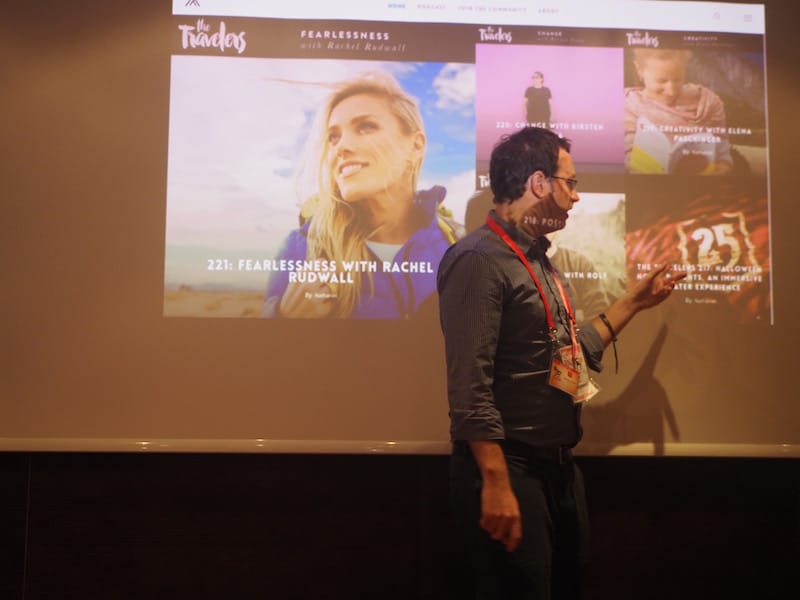
Love your passion for podcasting, dear Nathaniel – and to feature on your show “The Travelers” with my own passion for Creative Travel through our Skype Interview exactly a year ago …
“He is living what I teach how to do”, says Facebook Live Streaming advocate Shawn Smith with a broad smile.
“See, this thing about Facebook Live”, Shawn goes on to speak openly, “I have originally been shying away from it. I mean, I have never done it before, my heart was racing, I didn’t like video .. But then, something happened. People all of a sudden joined in: People like my neighbours, friends, classmates from high school, etc. So many dipped in! And because there were so many questions, the session turned into a 90-minute thing. And after the live stream, the remaining 35 stoves we hoped to raise money for as part of our humanitarian aid project to families in Guatemala, were funded in two days, with $5.800 raised in five days. There was something about Facebook Live that day that taught me to look at it as a powerful tool for change.”
So why Facebook Live over, say, Periscope, Instagram Stories, etc., Shawn asks? “On your Facebook Page”, he carries on, “live streams can give you a massive organic reach! A Facebook page with 200.000 page fans can easily convert to a double reach of more than 400.000 through a Facebook Live session, as opposed to posting an image with a link to a blog post, where the organic reach can be as low as 2.000 for that same page.”
“Facebook is clearly favouring Facebook Live. It is what is working there right now: An informal, shareable, user & mobile friendly, REAL and honest way to get your message across.” (Shawn Smith, #NBEFinland).
Here are some good tips for you in order to get started:
- Be prepared, but not too prepared! React in real time to users’ interaction & feedback.
- Have a 3-7 point outline of your content, and “talk about it”.
- Be conversational, ask questions, ask for comments, call out people by their name.
- Be authentic, be vulnerable. Be open. It is a little difficult at the start, but gets easier over time.
- Ask people to share your livestream with a friend, invite calls to action to build your email list.
- Do not just read your blog post, preach, pitch or sell.
- Try not to talk to a “room of people”, but instead talk to “one person”.
Create effective call to actions:
- Offer link in chat to an email opt-in (use tools like mail chimp, optin monster, etc.)
- Promote an upcoming event, such as a workshop, webinar, meet-up, sign-up, etc.
- Promote an upcoming product or service (“sign up to get notified” ..)
- Once a week, jump on Facebook Live, and add some value to the conversation you wish to moderate. Do it on your Facebook page, that is really driving organic reach. Do it once a week, ideally at the same time.
- Create an epic blog post – or use an existing one.
- Create an email opt-in freebie related to the epic blog post (i.e. a one to two page PDF, a cheatsheet, a checklist, a map, recipes, even ebooks! Tools to create these are for instance Beacon.by, Designrr.io, etc.
- Post your Freebie on the same page as your epic blog post.
- Do a Facebook Live session and talk about the epic blog post. Summarize it.
- Your call to action will be about the freebie that is in the blog post: “You are not sending traffic to read the blog post, you are sending your audience to get the freebie”!
- Host a follow up Q & A live session around the topic of your blog post.
Last but not least, we hear on managing successful influencer campaigns by iambassador’s Nicholas Montemaggi, Toposophy’s Peter Jordan, Captivate’s Sarah Lee & Nordic Bloggers’ collective Andy Higgs.
Nicholas Montemaggi, director of marketing & project management at iambassador, shares the network’s successful results of #inLombardia365 and #EuroFoodTrip campaigns, combining “an immersive experience with a good dose of adventure, answering the demand for the experience economy”. Check out their latest official video to learn more about what makes iambassador truly THE leading global network for successful partnerships between digital influencers and the travel industry. They have also created their own industry event, called “The Social Travel Summit” previously held in Leipzig, Hamburg, and Inverness, whose latest report I strongly encourage you to download and read (yes. It’s free & very valuable to use!): http://thesocialtravelsummit.com/think-tank/.
“We are convinced about the power of influencer marketing in travel. These people are always on the road, always picking up new ideas. Attending the Social Travel Summit in Inverness, we came up with a whole series of very practical guidelines”, says Peter Jordan of the destination marketing agency Toposophy.
He goes on to explain that “there are challenges for DMOs in both marketing and management. Today, DMOs must face a shift in the work flow from marketing to management, from being content creators and managers to being content curators, facilitators, and enablers. All of this happens in the context of budget cuts, destination management headaches such as, ‘what’s the value in an influencer anyway’, as well as a growing influence on the decision-making process by smaller, local businesses. It certainly isn’t easy, but there are some DMOs out there that are doing a fantastic job at just that, such as Costa Brava Tourism, Emilia Romagna, or Visit Finland.”
Addressing content creators, Peter urges us to look at emerging consumer trends, such as health, wellness, or fitness. Before any visit to a particular travel destination, we should always communicate and ask ourselves: Why am I here? What am I in for in the long run? How are local businesses able to benefit from my work? As in, how and why should they pay and work with me? After the visit, he encourages us to come up with the impact, and evidence for our partners: “Package together what you did, present it attractively and coherently. What is to be improved for next time? Make sure that you always think for the long term. Move on from being ‘roving reporters’, to becoming brand ambassadors! Have your say in matching the itinerary with your audiences. Fact check! It is really important for presenting quality in your work.”
Finally, summing it up for DMOs, Peter recalls that “a visit of an influencer isn’t just a press trip. Organise small Q & A forums, workshops for local businesses, coaching for hotels, etc. Formalize this into the agreement that both sides will benefit from.”
She mentions the “importance of reach PLUS relevance“, which hits the sweet spot of maximising reach within a certain niche topic in the travel influencer spheres. “Inform, Inspire, Identify. Those are the three key words we need to address. If people can identify with you, they are more likely to make a booking from you, or buy a certain service from you. It is as simple as that. Start building awareness and engagement, and sales will naturally follow.”
When choosing who to work with, Andy Higgs mentions that “collectives are but one way to go to for reference. But don’t forget to do your own homework! Find that perfect influencer fit for your style, your brand, your mission, and take all the time necessary to do so. Check a blogger’s media kit: Is it full of the right kind of statistics, case studies, testimonials, etc.? Does the person you choose to work with go to trade shows? Do they care about the industry, are they engaged, passionate, and full of ideas? Do you like their style? Their personality? How strong is the brand, i.e. the personality of that particular influencer? Does he or she provide a matching niche / interest with your own brand? All of these are important questions you need to address besides just looking at collectives and stats.”
Ready for the digital travel age? 🙂
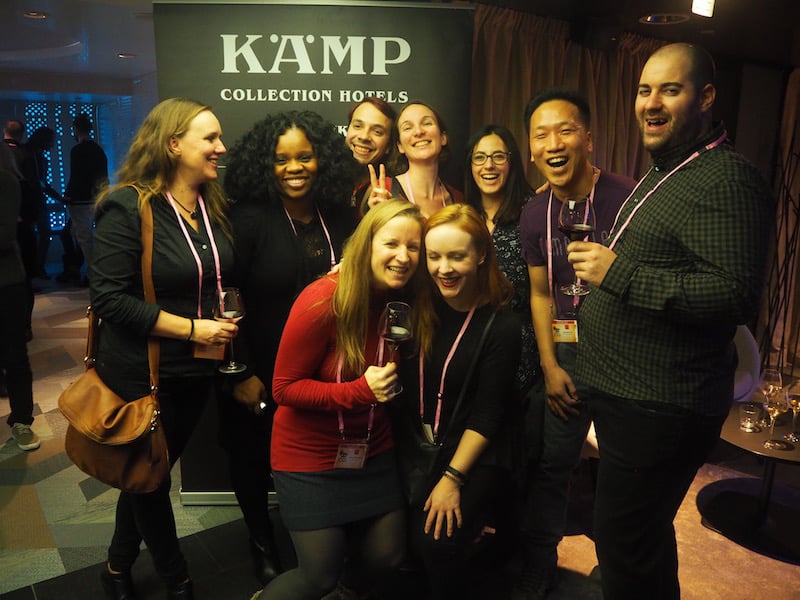
Walk the talk: Our group of travel influencers from seven different countries did just that, visiting the Lahti region in Southern Finland ahead of this year’s #NBEFinland Matkamessut in Helsinki.
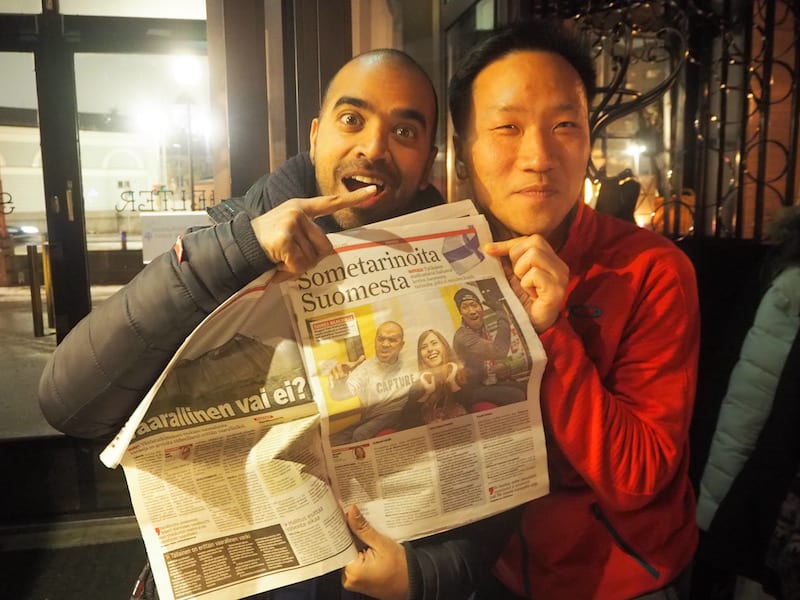
And as much as we love digital, we cannot help but feeling flattered when the Finnish newspapers are out to “report on us”, the bloggers taking over public travel opinion on Finland!
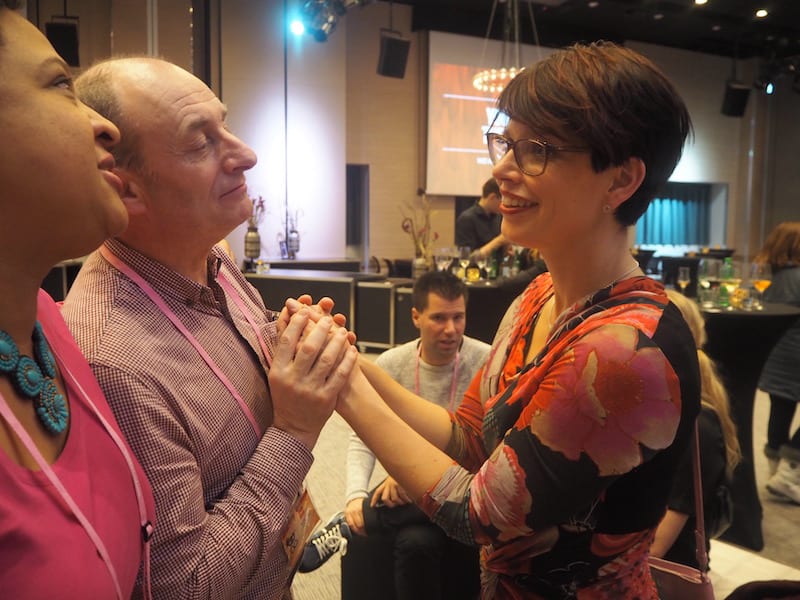
Kudos to you and all your hard-working team, dear Inna, Sarah & Terry Lee (on the left) seem to be saying …
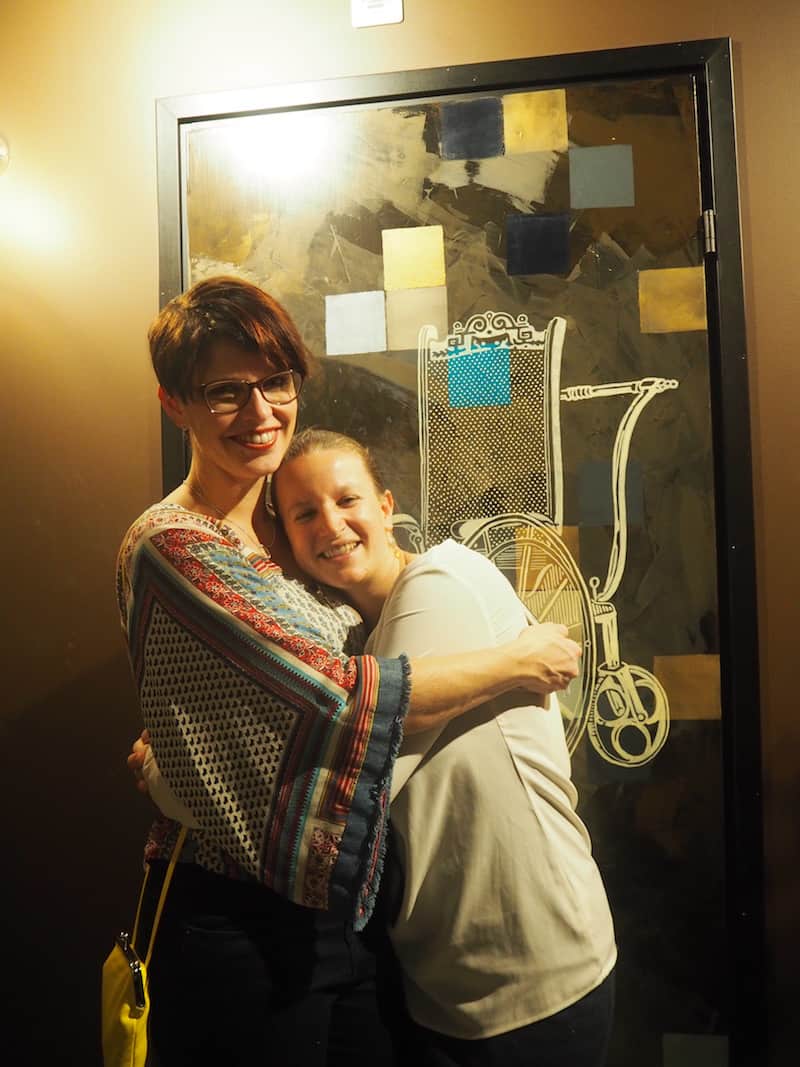
… and really. “You know that I love you …” Words from a constantly emotional, as well as super professional conference organiser Inna-Pirjetta Lahti. Can’t wait to be back for next year’s #NBEFinland !!!
All of my #NBEFinland photos are published here:
